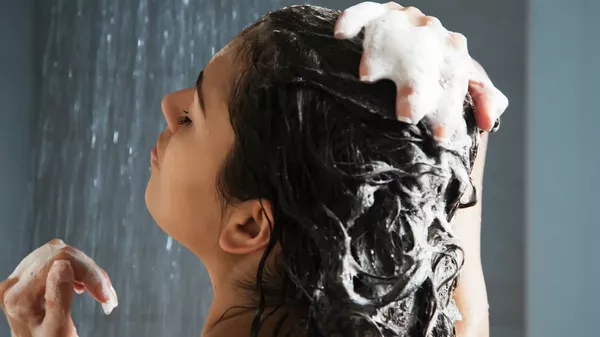Women’s hair care is a multifaceted aspect of self-care that involves understanding one’s hair type, adopting healthy routines, and choosing suitable products. From cleansing and conditioning to styling and maintaining overall hair health, a well-rounded approach contributes to beautiful and vibrant locks. In this extensive guide, we will explore the various elements of women’s hair care, providing tips, recommendations, and answering common FAQs.
I. Understanding Women’s Hair: Diversity in Types and Textures
Women’s hair comes in a myriad of types and textures, ranging from straight and fine to curly and coily. Recognizing the unique characteristics of one’s hair is the first step in tailoring an effective care routine. Factors such as hair thickness, porosity, and natural curl pattern play a crucial role in determining the most suitable products and practices.
II. Essential Women’s Hair Care Products: Building a Regimen
Shampoo: Selecting the right shampoo is pivotal for maintaining clean and healthy hair. Women should choose shampoos that cater to their specific needs, whether that be volumizing, hydrating, or color-preserving. It’s important to note that overwashing can strip the hair of natural oils, so finding a balance is key.
Conditioner: Conditioning is an integral part of women’s hair care. Conditioners help detangle, moisturize, and add shine to the hair. Women should opt for conditioners that address their hair type and concerns, such as frizz control or damage repair.
Hair Masks and Treatments: Periodic deep conditioning treatments or hair masks can provide an extra boost of nourishment. These treatments help repair damage, improve elasticity, and enhance overall hair health. The frequency of these treatments depends on individual needs.
Styling Products: From mousses and serums to hairsprays and gels, styling products allow women to achieve various looks. The choice of styling product depends on the desired hairstyle, whether it be sleek and straight or defined curls. Experimenting with different products helps discover what works best for specific hair types and styling goals.
III. Women’s Hair Care Routines: Tips for Healthy and Gorgeous Hair
Regular Trims: Regular trims are essential for maintaining the health and shape of women’s hair. Trimming helps prevent split ends and breakage, contributing to overall hair vitality. The frequency of trims varies based on individual hair growth rates and styling choices.
Scalp Care: A healthy scalp is the foundation for healthy hair. Women should pay attention to scalp cleanliness, massaging it to stimulate blood circulation, and using gentle exfoliating products. Specific scalp conditions, such as dandruff or dryness, may require targeted treatments.
Heat Styling Precautions: Excessive use of heat styling tools, such as flat irons and curling wands, can lead to damage and breakage. Using heat protectant products before styling, and opting for lower heat settings, helps minimize the risk of heat-induced damage.
Protective Hairstyles: Women with longer hair may benefit from protective hairstyles, such as braids or buns, to minimize friction and prevent breakage. These styles are particularly useful for preserving curls or preventing damage from environmental factors.
IV. Styling Tips for Women’s Hair: Dos and Don’ts
Do Match Hairstyles to Face Shape: The right hairstyle enhances facial features and complements the face shape. Considering face shape helps in selecting a style that accentuates strengths and minimizes any perceived imbalances.
Do Experiment with Hair Colors: Experimenting with hair colors can add vibrancy and dimension to women’s hair. Whether opting for subtle highlights, bold colors, or balayage, the right hue can enhance overall beauty.
Don’t Overuse Styling Tools: While styling tools are useful, overusing them can lead to damage. Air-drying or adopting heat-free styling methods on occasion helps maintain hair health.
Do Embrace Natural Texture: Embracing natural texture is a growing trend in women’s hair care. Whether curls, waves, or straight hair, allowing natural texture to shine adds authenticity and reduces the need for excessive styling.
Don’t Skip Regular Hair Checks: Regularly checking the condition of the hair, including the ends and overall health, helps in identifying issues early. Prompt attention to dryness, split ends, or other concerns contributes to long-term hair health.
V. FAQs on Women’s Hair Care:
1. How often should women wash their hair?
The frequency of hair washing depends on individual hair type and lifestyle. Generally, washing every 2-3 days is suitable for most women, but those with specific hair concerns may adjust their routine accordingly.
2. Can women with oily hair use hair oil?
Yes, women with oily hair can use hair oil, but it’s crucial to choose lightweight formulas and apply them sparingly to avoid greasiness. Focusing on the ends rather than the roots is advisable.
3. What should women with thinning hair do?
Women experiencing thinning hair should consult with a healthcare professional or dermatologist to determine the underlying cause and explore potential treatments or lifestyle changes.
4. How can women combat frizz in humid weather?
Combatting frizz in humid weather involves using anti-frizz products, such as serums or creams, and adopting protective hairstyles. Keeping the hair moisturized and protected from humidity helps minimize frizz.
5. Can women with curly hair use the same products as those with straight hair?
While some products may work for both hair types, individuals with curly hair often benefit from products specifically designed to enhance and define curls. Experimenting with different formulations helps find the most suitable products.

